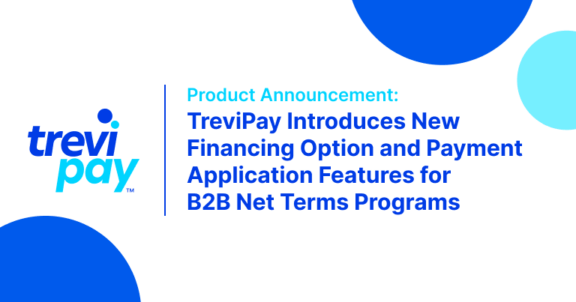News & Insights · Approx. 3 minute read
TreviPay: 2021 Was the Year of Flow

Before COVID hit, online B2B marketplaces were already growing in popularity, says Brandon Spear, CEO of TreviPay. During the pandemic, they’ve become a necessity — and so have payment solutions that offer the same speed and convenience. Read his thoughts in the PYMNTS eBook, “In a Word: 50 Thought Leaders Sum Up 2021.”
The pandemic was a crash course in digital innovation for businesses all over the world, but especially those focused on B2B commerce. Suddenly, expectations and demand for seamless online experiences became critical, forcing businesses to “go with the flow” or be left behind.
Online marketplaces were already growing in popularity, but they quickly became a necessary and important part of driving commerce when COVID-19 hit. As the demand for eCommerce options continued to grow rapidly, so did the need for a seamless customer experience with frictionless transactions and payments. 2021 was all about serving the digital customer, with some B2B companies starting to dip their toes into this new eCommerce space.
Many B2B businesses — most of which were slow to digitally transform prior to the pandemic — found that eCommerce and online marketplaces offered a quick and easy way to procure their products or services. And B2B buyers, who continued working from home, flocked to these digital channels because they make it easy to find, compare and purchase items. B2B merchants and suppliers looked for ways to differentiate themselves from the competition, especially with the many uncertainties that remained. This will continue to be a trend in 2022 as businesses look for new and creative ways to win new customers, and to retain and strengthen customer relationships.
To keep loyal buyers coming back, it’s important to consider what a consumer is looking for in a digital transaction: convenience. Lengthy billing processes with multiple steps are the top challenge with current payment systems.
It’s also critical to offer multiple ways to pay, all with the ease of one-click purchasing. Our new study found that B2B merchants now offer 4.7 payment methods on average. Of these companies, over 50% currently offer traditional wire transfer, digital wallet payments, traditional credit cards and real-time payments.
Most business customers prefer to purchase as they do offline, via an invoice and with terms. In the shift to digital-first interactions, instant credit decisioning is critical to cart conversion and keeping the customer coming back. Additionally, these buyers will spend more, and more frequently, when they have a dedicated financial relationship and credit line with a business. The advantage over the competition is significant when customers know they can purchase frictionlessly when they’re ready for more stock.
An ideal payment experience should flow into a natural extension of customer engagement versus a separate, tedious activity. Finding ways to facilitate frictionless payments and improve customer experience within marketplaces will continue to be the integral ingredient for B2B growth in the New Year.
Originally published on PYMNTS.com
Stay up-to-date with the latest from TreviPay
Thank you for subscribing! You will now receive email updates from TreviPay.



